Can Random Acts of Kindness Increase Wellbeing? (+ 22 Ideas)
 The phrase “random acts of kindness” (RAK) is relatively well known and has been shared all over the world.
The phrase “random acts of kindness” (RAK) is relatively well known and has been shared all over the world.
When you consider the times when you’ve practice random acts of kindness, what past practices come to mind?
I found myself thinking of this question as I wrote this blog because it’s a good question to ask, “When did I give of myself without expecting anything in return?”.
This piece has some really great resources and explanations of RAK’s and how to live it throughout your days.
Before you continue, we thought you might like to download our three Positive Psychology Exercises for free. These science-based exercises will explore fundamental aspects of positive psychology including strengths, values, and self-compassion, and will give you the tools to enhance the wellbeing of your clients, students, or employees.
This Article Contains:
- What is a Random Act of Kindness?
- A Look at the Psychology and Science of Kindness
- Can Kindness Impact our Wellbeing?
- Positive Psychology and Kindness
- How Unexpected Acts of Kindness Can Make a Difference
- The Random Acts of Kindness Foundation
- Putting Theory into Practice
- Lesson Plans for Teachers
- 12 Apps to Help Practice Kindness
- 4 Books on the Topic
- 8 Recommended YouTube Videos
- 16 Quotes
- A Take-Home Message
- References
What is a Random Act of Kindness?
A Random Act of Kindness is giving your best self to others without requests or promise of return on investment. It’s simply doing something nice for someone else, without them asking and without you doing it for anything in return.
A Look at the Psychology and Science of Kindness
Kindness is interesting, in that unlike an emotion such as happiness, or a feeling and action like gratitude, kindness is mostly a behavior or action.
Through years of experience, we each have been trained in our thoughts and perspectives of what kindness is, what it means, what the intention behind someone’s kindness is, so that it is often lost what the kind act is.
People are more likely (and it may be something in our genetic code that we’ve learned over the years) to give more to those with whom they have a closer relationship with than those that are of an acquaintance level (Burnstein, Crandall, & Kitayama, 1994; Cialdini, Brown, Lewis, Luce, & Neuberg, 1997).
People with certain job titles and duties or even roles in their social environment at home like helping professionals or parents may be expected to offer acts of kindness (Bryan, 2009; Davey & Eggebeen, 1998).
Gift-giving seems to induce expectation of reciprocity, or in other words, a social exchange and equity in a relationship are valued with gifts (Gouldner, 1960; Uehara, 1995; Clark & Mills, 1979; Thibaut & Kely, 1959; Walster, Berscheid, & Walster, 1973).
Can Kindness Impact our Wellbeing?
First, let’s define each of these terms. Kindness means being nice or offering the best of yourself to someone whether it be a minute, second, or longer.
Wellbeing is a bit trickier to define but in the simplest terms, it means “the state of being comfortable, healthy, or happy” (Google Dictionary). If we look at the research side of things, the CDC has a definition of wellbeing that is all-inclusive (CDC, n.d.).
In the most general sense, wellbeing is a positive outcome that is a determinant for people throughout all societies of how their lives are going (Frey & Stutzer, 2002; Andrews & Withey, 1976; Diener, 2000; Ryff & Keyes, 1995; Diener, Suh & Oishi, 1997; Veenhoven, 2008).
At a minimum, the fundamentals for wellbeing are adequate living conditions (e.g., housing, employment) (Frey & Stutzer, 2002; Andrews & Withey, 1976; Diener, 2000; Ryff & Keyes, 1995; Diener, Suh & Oishi, 1997; Veenhoven, 2008).
As the term “wellbeing” is used across disciplines, there is no consensus on the definition of wellbeing. At a minimum, there is an agreement across disciplines that wellbeing includes
- the presence of positive emotions and moods (e.g., contentment, happiness);
- the absence of negative emotions (e.g., depression, anxiety);
- satisfaction with life;
- fulfillment and,
- positive functioning.
(Frey & Stutzer, 2002; Andrews & Withey, 1976; Diener, 2000; Ryff & Keyes, 1995; Diener, Suh, Oishi, 1997; Veenhoven, 2008)
14 Proven Benefits
The wonderful part of random acts of kindness is that there are not only benefits to the receiver but also to the giver. When we break down the benefits, we need to first look at the emotions that are associated with random acts of kindness. An important note is that emotional responses are based on whether they are normative or non-normative distinction (Exline, Lisan, & Lisan, 2012).
- Recipients of kindness can feel loved.
- Recipients and givers of kindness can experience a sense of awe when they think about profound acts of love or virtue.
- Whether you are recipient or giver or merely just a witness you can feel the benefits of an increase in oxytocin. Oxytocin is commonly called the “love hormone” and this helps to lower blood pressure, improve overall heart health, increase self-esteem and optimism.
- Kindness can increase the feeling of strength and energy due to helping others.
- Kindness can also make one feel calmer.
- Less depressed.
- Increased feelings of self-worth.
- For those that volunteer their time or money for charitable causes, they often have fewer aches and pains.
- Kindness is most similar to a medical anti-depressant. Kindness pushes your body to produce serotonin, which is commonly known as the “feel-good” chemical that provides healing and calming feelings.
- Kindness decreases pain, by generating endorphins (the brain’s natural painkiller).
- Stress, it has been shown that people that are more kind have 23% less cortisol (the stress hormone) and age slower than the average population.
- Anxiety, the University of British Columbia did a study on a group of highly anxious individuals in which they performed at least 6 acts of kindness a week. After one month, there was a significant increase in positive moods, relationship satisfaction and a decrease in social avoidance in socially anxious individuals.
- Depression is reduced, mortality is delayed, and wellbeing and good fortune are improved when we give of ourselves.
- Lowering blood pressure from giving acts of kindness, creates emotional warmth, which releases a hormone known as oxytocin. Oxytocin causes the release of a chemical called nitric oxide, which dilates the blood vessels. This reduces blood pressure, and therefore, oxytocin is known as a “cardioprotective” hormone. It protects the heart by lowering blood pressure.
Sources: Cassidy & Shaver, 2008; Mikulincer & Shaver, 2007; Keltner & Haidt, 2003; The Random Acts of Kindness Foundation, n.d; Stephen Post, Case Western Reserve University School of Medicine.
Research and Studies
Research is just at the precipice of trying to understand the positive effects that random acts of kindness can give.
I have highlighted two studies I have found while researching this topic. Hopefully, this will give you more insight into the current understanding of kindness as an intervention and the multiple modalities it can be used in.
Reflecting on acts of kindness toward the self: Emotions, generosity, and the role of social norms (Exline, Lisan, & Lisan, 2012)
Researchers, Exline, Morck Lisan, and Lisan, looked at how reflecting on acts of kindness toward the self could affect emotions, generosity, and the role of social norms. For example, they asked, “How do people respond, in terms of emotion and behavior, when prompted to recall an act of kindness from another person?”
By carrying out two studies, these researchers were able to gather responses based on whether kindness was seen as normative – meaning based on past experience, and what behavior does that act of kindness fall in line. Their results showed that normative kindnesses were linked with more positive emotion and less negative emotion than non-normative kindnesses.
On the whole, these findings suggest that recalling normative kindnesses will increase mood or generosity.
Loving-kindness and compassion meditation: Potential for psychological interventions (Hofmann, Grossman & Hinton, 2011)
Contemporary psychology is researching more and more on the impact that mindfulness meditation can have on a person. In this study, Hoffman, Grossman, and Hinton look at loving-kindness and compassion meditations to see how impactful they would be as an intervention.
There is evidence to show that using LKM and CM have an associated effect of an increase in positive affect and a decrease in negative affect.
In neuroendocrine studies, preliminary results are showing that CM may decrease stress-induced subjective suffering and immune response. “Neuroimaging studies insinuate that LKM and CM may improve activation of brain areas that are involved in emotional processing and empathy” (Hofmann et al. 2011).
Interesting Statistics
The research and science on common outcomes, behaviors, emotions in positive psychology are increasing by the year. In 2010, the Harvard Business School conducted a survey on happiness in 136 countries. Through this study, they found evidence that people who were generous financially, like with charitable donations, were the happiest overall.
Christine Carter’s “Raising Happiness: In Pursuit of Joyful Kids and Happier Parents,” has found that giving of yourself to others can help protect your heart, literally. Giving can decrease your risk of heart disease.
In addition, it has been found that for people who are 55 years or older and volunteer, have their risk for dying early cut in half.
So, they have a “44% lower likelihood of dying early, and that’s after sifting out every other contributing factor, including physical health, exercise, gender, habits like smoking, marital status, and many more. This is a stronger effect than exercising four times a week or going to church” (Carter, 2011).
Positive Psychology and Kindness
An example of how, just by thinking, our body will react physically to these impulses is by the idea of moving our right arm. When you physically do so, new connections are created in a part of the brain called the motor cortex. Now, just thinking about moving your right arm, and imagining moving it over and over again can actually make the muscles in this same arm stronger.
Because of thoughts about the arm, cellular changes can happen. This reinforces the belief that no matter what one is thinking about, chemical reactions occur in the brain and can, therefore, lead to structural changes. We can create millions of new connections in our brains just by thinking compassionate thoughts.
The structure of our brains can be formed by our emotions. All your inspirations, motivations, loves, fears, hopes and dreams, and even your typical body language are wired into your brain in the form of connections between cells. These connections become so extensive over time that they even wire into 3-D networks, or circuits, as they are often called.
Acts of kindness, then, find their way into the chemistry and structure of our brain. If kindness becomes a habit, we can significantly alter the wiring of our brain. In fact, as we will examine later the brain is already wired for kindness. But we are always adding to and changing that wiring.
Throughout life, as we learn new things, grow, change our minds and even change our habits, new networks of new brain connections are laid down and old networks unravel.
This neuroplasticity occurs right up until the very last seconds of our lives. One of the benefits of it is that it actually allows the brain to get over injury and disease, as healthy brain cells compensate for damaged ones by sprouting new connections to take over some of their communications or pass the information through the brain by a slightly different route. (Hamilton, 2010).
Your brain is wired in the form of connections between cells where over time all of your feelings, emotions, and body language is wired extensively into these circuits. Therefore we can change the wiring of our brain through simple acts of kindness becoming a habit in our everyday lives.
Our brains seem to be initially set up for kindness, but we alter and change that wiring by learning, growing, and modifying our minds and habits over time. As this happens, new connections are made and the ones that were already there can be reformed. This actually allows for healthy brain cells to overcome the damaged ones by passing information throughout the brain in different ways when we are injured or fallen ill.
How Unexpected Acts of Kindness Can Make a Difference
Unexpected Acts of Kindness can make ALL of the difference to everyone around. Included in kindness is not only compassion but acknowledgment.
At the root of every issue and every emotion is the need for acknowledgment, and it is what makes being human and living so beautiful.
We each are able to acknowledge one another in the simplest of ways that we are human, we are in need, and we are in awe of all that there is to appreciate amongst us.
The Random Acts of Kindness Foundation
The Random Acts of Kindness foundation offers ideas, inspiration, posters, videos, quotes, calendars, printables all centered on random acts of kindness. It is headed by its president, Gary Dixon; Vice President – Brooke Jones; Rachel Stubby is the Director of Digital Strategy; and Karina Delaney is the Director of Strategic Partnerships.
RAK foundation’s goal is to make kindness a standard in all aspects of life.
When is Random Acts of Kindness Day?
Random Acts of Kindness day is February 17.
Do 20 Random Acts of Kindness to celebrate.
Check out our lists below for inspiration.
Putting Theory into Practice
As you’re reading the science behind kindness and living a positive life, make sure to think of your own daily routine. In your day to day, whom do you see or interact with? Spouse? Family? Friends? Co-workers? Or fellow bus or train riders?
Make the effort to reach out and show kindness to them as you have read throughout the article and/or will finish reading you can see there are emotional, physical and neurological benefits to kindness for anyone who puts this into practice.
5 Examples of Random Acts of Kindness
Here are six great examples of Random Acts of Kindness. It’s so interesting to see how each of them are so different.
- Ikea in Catania, Italy is letting stray dogs sleep on its rugs this winter.
- 250 people form a human chain to help their local bookshop, October Books in Southampton, move its stock 150 meters to the new shop.
- Eli Goldstone, took to Twitter after seeing a book that greatly appealed to her. She asked her followers sincerely but not seriously if they could help track the book for her. A fellow Twitter user saw her post and offered to send the book to her.
- A group of girls was taking classic bathroom “selfies” on their night out at a casino in Canada when a woman noticed and offered to take their pictures for them. The lady said that she remembered when she and her friends used to go out, and how much fun it was. The girls offered for her to come with them.
- A woman and her family were dining out at a Chinese restaurant in late 2016. The woman had recently lost her hair due to chemotherapy treatment. A fellow diner paid for her and her family’s dinner and wrote a note to explain: The note says, “I lost my wife to cancer 5 years ago. I know how tough it can be going through this. Your meal is on me. Merry Christmas.”
6 Random Acts of Kindness Ideas
Check out this quick list of 6 Random Acts of Kindness Ideas I pulled together after searching the Internet for some of the most meaningful ones that you can do easily throughout your week.
- When in line to get your morning coffee, pay for the person behind you.
- Whoever you interact with today, if it’s 3-50, compliment the first two people.
- Pick up your phone and open your text-messaging app – send a positive text to 4 people.
- Donate items in your home that you haven’t used in the past year.
- Leave some spare quarters at the laundromat for someone to find.
- When at the store, leave any extra not-used coupons next to the products for someone to find that could really use them.
6 Ideas Specifically for Strangers
Check out this list of 5 ideas for random acts of kindness
- When parking your car, take out a piece of paper and pen. Leave a note to a fellow car (driver ☺) to let them know that they did an amazing job at parking.
- Smile genuinely at 5 strangers throughout your day.
- Take some flowers or sweet treats to a nurse’s station at a nearby hospital.
- Give up your seat so someone else can sit on the train or bus.
- Hold the door open for someone.
- Make a goodie bag of treats, canned food, and warm gloves, socks or a hat and give it to a homeless person.
RAK at Work: 5 Ideas for Employees and Co-Workers
- Send an out-of-the-blue gratitude email to a co-worker and let them know how grateful you are for them.
- When on a team call, do a heartfelt shout-out to one of your co-workers that did an awesome job on a project
- Get your workplace in on the action, and organize a fundraiser or charity drive.
- Help others connect by using your personal network and share with a co-worker.
- Let your boss know that you appreciate them and the way they _______ (you fill in the blank).
Random Acts of Kindness to Practice with Kids
There are many ways to teach kids how to be kind and how to do it randomly. A great way of learning about kindness and the benefits for both the recipient and the giver is to practice it.
Here are ten ways that kids can practice random acts of kindness as stated from “100 Acts of Kindness for Kids” from the Cups and Crayons website.
- Leave change in the vending machine, for someone to use when they are hungry.
- Sit with a new kid at school.
- Introduce the new kid at school to your friends.
- At the end of the school day, tell your teacher thank you for a great day of learning.
- When you get home from school, tell your parents or guardian how much you missed them.
6 Ideas for High School Students to ‘Pay it Forward’
- Write a thank-you note to the cafeteria staff.
- Sit with a classmate that is not sitting with anyone at lunchtime.
- Offer to tutor a fellow classmate on a subject that you excel at.
- Tell a teacher how much you appreciate them and their style of teaching.
- Tell your parents thank you.
- Genuinely compliment 1 person every day.
Lesson Plans for Teachers
Check out these awesome lesson plans for teachers. Included are great ways to integrate random acts of kindness into their student’s learning.
First, check out the Random Acts of Kindness official website to see all the great lesson plans they have for kindergarten to 8th grade. Each of the lessons teaches kids Social Emotional (SEL) skills.
Next check out Edutopia’s website, by Rebecca Alber. This is a great place to find classroom activities and resources for developing a vital character trait.
To get you started, scroll down a little bit to see the Kick-Start Kindness Activities. It provides students with prompts to share kindness to friends and family, and writing prompts, as well as how to do shout-outs, appreciation boxes, temperature checks, the buddy-system, and community circle.
RAK Activities and Worksheets
I’ve collated some RAK activities and worksheets that you can share with your children or students.
This Worksheet Place has some fun Acts of Kindness worksheets, ideally used for First to Third Graders. There’s even a fun worksheet where the student can create a Kindness Poem.
Teachers Pay Teachers is a really fun site to find resources made by fellow teachers for other teachers. There is an option to digitally download free content. You can download worksheets, games, RAK calendars, and RAK challenges.
Other Resources and Printables (PDF)
Here are some other resources to have fun with while learning and being kind:
The Doing Good Together site has some awesome resources. Some of the resources are Feelings flashcards and games, ways to include kindness into your family routine, and how to advocate for animals.
The Random Acts of Kindness website has some cool posters for your classroom, calendars, coloring pages, bookmarks, and even an award certificate for the student that shows kindness.
Random Acts of Kindness Advent Calendar
So many children have fun with this Kindness Advent Calendar, print it out and use when it’s Advent.
12 Apps to Help Practice Kindness
Check out these 12 apps recommended helping you practice kindness (Theifels, 2016; Goodnet.org, 2014).
For Kids
1. Toca Pet Doctor
Students take care of pets that are ailing from different diagnoses. They could be suffering from physical or emotional pain, and each needs help with tasks. Some of the tasks include feeding, or overcoming sadness. Ages 2-6.
You can get the app here.
2. One Globe Kids
Students can meet other students around the world, and learn what they like to do, how they speak, and much more. Ages 3-10.
Available at iTunes.
3. The Great Kindness Challenge: School Edition
Provides the kids with ideas for random acts of kindness like smile at 25 people, or pick up 10 pieces of trash. The students can do them together or individually, and set goals as they go. Ages 4-18.
Available at iTunes.
4. Avokiddo Emotions
This app has a variety of animals with a wide range of personalities. Kids can play dress up, feed the animals and share toys. The animals “react appropriately” to the choices that the child makes in the game, teaching kids how to recognize facial expressions. Ages 5 and under.
You can get the app here.
5. Four Little Corners
Four Little Corners is an interactive storybook app that teaches lessons on tolerance, equality, and compassion by integrating geometry. Ages 5 and under.
Available at iTunes.
6. Peek-a-Zoo
Peek-a-Zoo is a multilingual app that is based on the peek-a-boo game. It teaches the child about faces and facial expressions. Ages 5 and under.
Available at iTunes.
7. Wee You-Things
Wee You-Things shares interesting stories on diversity, empathy, and confidence. It shows how it’s great to be unique, and “you”. Ages 5 and under.
Available here at iTunes.
8. DPS from the Social Express
DPS from the Social Express is for elementary-aged kids and helps kids identify and label emotions. DPS stands for My Digital Problem Solver. Ages 6+.
Available at iTunes.
9. Middle School Confidential 1 and 2
This app teaches healthy ways to handle issues unique to middle school. As you open the app you can see that 6 characters are with you to navigate throughout different social situations. There are quizzes, resources, and tips from other kids. Ages 8-14.
You can get the app here.
10. Sit with Us
Developed by a teen to combat bullying and is used to help kids feel welcome, especially in the cafeteria. Age 13+.
Available at iTunes.
Apps for Adults
1. Pay it Forward
Is from the official app of the Global Pay it Forward movement that was designed to make the world a better place to live (5 Apps that will increase our kindness quotient).
Available at iTunes.
4 Books on the Topic
1. The Little Book of Kindness: Everyday actions to change your life and the world around you – Bernadette Russell
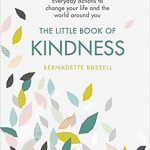
Prompted by the seeming hopelessness of the world around her, Bernadette Russell undertook a pledge to be kind to a stranger every day for a year. The experience left her wanting to inspire others.
The Little Book of Kindness is packed with fun ideas, practical tips and interactive exercises that encourage you to ‘be kind’ in every area of life – online, to strangers, to the environment, in your community, to yourself – and change the world, one act of kindness at a time.
Available from Amazon.
2. The Opposite of Hate: A Field Guide to Repairing Our Humanity – Sally Kohn
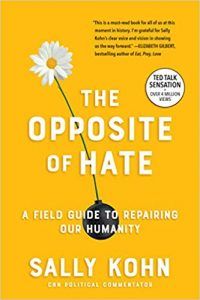
Her viral TED Talk on the need to practice emotional—rather than political—correctness sparked a new way of considering how often we amplify our differences and diminish our connections.
Available from Amazon.
3. Each Kindness (Jane Addams Award Book (Awards)) – Jacqueline Woodson
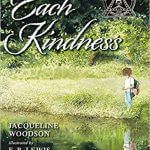
Chloe and her friends won’t play with the new girl, Maya. Every time Maya tries to join Chloe and her friends, they reject her. Eventually, Maya stops coming to school.
When Chloe’s teacher gives a lesson about how even small acts of kindness can change the world, Chloe is stung by the lost opportunity for friendship and thinks about how much better it could have been if she’d shown a little kindness toward Maya.
Available from Amazon.
4. Chicken Soup for the Soul: Random Acts of Kindness: 101 Stories of Compassion and Paying it Forward – Amy Newark
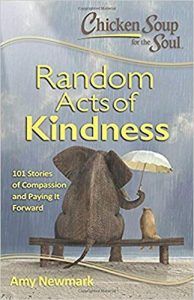
From random acts of kindness to doing what’s right, this book shows how positive attitudes and good deeds can change the world.
This book shines a bright light on the widespread goodwill in our world as everyday heroes demonstrate acts of kindness, compassion, and commitment to others.
The stories in Chicken Soup for the Soul: Random Acts of Kindness will uplift you, inspire you, and brighten your day.
Available from Amazon.
8 Recommended YouTube Videos
Kindness Boomerang – When one person sets in motion an act of kindness that is passed along to others
The Power of Kindness – Orly Wahba takes us through a personal journey of changing the world through the power of kindness.
Acts of Kindness that have made the world a better place, Scoop.
A guided relaxation meditation using loving-kindness, UNH Health & Wellness.
How you treat others is ultimately who you are. Motivation for being kind, Fearless Soul.
The scientifically-proven benefits of being kind to others, The Science of Being Kind.
Mark Kelly encourages to complete one act of kindness each day to change lives
Why it is important to be kind to others, to inspire others to be kind, and to be kind to yourself
16 Quotes
No kind action ever stops with itself. One kind action leads to another. Good example is followed. A single act of kindness throws out roots in all directions, and the roots spring up and make new trees. The greatest work that kindness does to others is that it makes them kind themselves.
Amelia Earhart
No act of kindness, no matter how small, is ever wasted.
Aesop
For beautiful eyes, look for the good in others; for beautiful lips, speak only words of kindness; and for poise, walk with the knowledge that you are never alone.
Audrey Hepburn
Kindness is the language which the deaf can hear and the blind can see.
Mark Twain
Goodness is about character – integrity, honesty, kindness, generosity, moral courage, and the like. More than anything else, it is about how we treat other people.
Dennis Prager
Kindness in words creates confidence. Kindness in thinking creates profoundness. Kindness in giving creates love.
Lao Tzu
A little thought and a little kindness are often worth more than a great deal of money.
John Ruskin
A warm smile is the universal language of kindness.
William Arthur Ward
A tree is known by its fruit; a man by his deeds. A good deed is never lost; he who sows courtesy reaps friendship, and he who plants kindness gathers love.
Saint Basil
Here are the values that I stand for: honesty, equality, kindness, compassion, treating people the way you want to be treated and helping those in need. To me, those are traditional values.
Ellen DeGeneres
My religion is simple. My religion is kindness.
Dalai Lama
Remember there’s no such thing as a small act of kindness. Every act creates a ripple with no logical end.
Scott Adams
Kindness is in our power, even when fondness is not.
Samuel Johnson
To practice five things under all circumstances constitutes perfect virtue; these five are gravity, generosity of soul, sincerity, earnestness, and kindness.
Confucius
Whether one believes in religion or not, and whether one believes in rebirth or not, there isn’t anyone who doesn’t appreciate kindness and compassion.
Dalai Lama
In Asian languages, the word for ‘mind’ and the word for ‘heart’ are same. So, if you’re not hearing mindfulness in some deep way as heartfulness, you’re not really understanding it. Compassion and kindness towards oneself are intrinsically woven into it. You could think of mindfulness as wise and affectionate attention.
Jon Kabat-Zinn
A Take-Home Message
I hope that you got some great ideas and actionable items that you can integrate into your life. This article was a true refresher in what it means to be human sharing our lives with one another – even if we don’t know each other.
If you are a teacher, I hope you were able to capture all the wonderful resources we provided to show your students.
If you are just a searcher for ways to be inspired, there are some incredibly helpful tips, resources (apps, books) that can further you on your journey of being kind.
We hope you enjoyed reading this article. Don’t forget to download our three Positive Psychology Exercises for free.
- Andrews, F. M. & Withey S. B. (1976). Social indicators of well-being. New York: Plenum Press; 63–106.
- Bryan, W. V. (2009). The professional helper: The fundamentals of being a helping professional. Springfield, IL: Charles C. Thomas, Publisher.
- Burnstein, E., Crandall, C., & Kitayama, S. (1994). Some neo-Darwinian decision rules for altruism: Weighing cues for inclusive fitness as a function of the biological importance of the decision. Journal of Personality and Social Psychology, 67(5), 773–789.
- Carter, C. (2011). Raising Happiness: 10 Simple Steps for more joyful kids and happier parents. New York: Ballantine Books.
- Cassidy, J., & Shaver, P. R. (Eds.). (2008). Handbook of attachment: Theory, research, and clinical applications (2nd ed.). New York, NY: The Guilford Press.
- CDC Centers for Disease Control & Prevention (CDC, n.d.) Well-Being Concepts. Retrieved from https://www.cdc.gov/hrqol/wellbeing.htm.
- Cialdini, R. B., Brown, S.L., Lewis, B. P., Luce, C., & Neuberg, S. L. (1997). Reinterpreting the empathy-altruism relationship: When one into one equals oneness. Journal of Personality and Social Psychology, 73, 481–494.
- Clark, M. S., & Mills, J. (1979). Interpersonal attraction in exchange and communal relationships. Journal of Personality and Social Psychology, 37, 12–24.
- Davey, A., & Eggebeen, D. J. (1998). Patterns of intergenerational exchange and mental health. The Journals of Gerontology: Series B: Psychological Sciences and Social Sciences, 53B, 86–95.
- Diener, E., Suh, E., & Oishi, S. (1997). Recent findings on subjective well-being. Indian Journal of Clinical Psychology; 24:25–41.
- Diener, E. (2000). Subjective wellbeing: the science of happiness and a proposal for a national index. American Psychologist; 55(1):34–43.
- Exline, J. J., Lisan, A. M., & Lisan, E. R. (2012). Reflecting on acts of kindness toward the self: Emotions, generosity, and the role of social norms. The Journal of Positive Psychology. 7(1), 45-56.
- Frey, B. S. & Stutzer, A. (2002). Happiness and economics. Princeton, N.J.: Princeton University Press.
- Goodnet.org. (2014). 5 Apps that will increase our kindness quotient. Retrieved 3 March 2019, from https://www.goodnet.org/articles/5-apps-that-will-increase-your-kindness-quotient-list.
- Gouldner, A. W. (1960). The norm of reciprocity: A preliminary statement. American Sociological Review, 25, 161–178.
- Hamilton, D. R. (2010). Why Kindness Is Good For You. Hay House.
- Keltner, D., & Haidt, J. (2003). Approaching awe, a moral, spiritual, and aesthetic emotion. Cognition and Emotion,17, 297-314.
- Kindness Quotes. Retrieved from https://www.brainyquote.com/topics/kindness
- Marks, N. F., & Song, J. (2009). Compassionate motivation and compassionate acts across the adult life course: Evidence from US national studies. In B. Fehr, S. Sprecher, & L.G. Underwood (Eds.), The science of compassionate love: Theory, research, and applications (pp. 121–158). Malden, MA: Wiley.
- Mikulincer, M., & Shaver, P. R. (2007). Attachment in adulthood: Structure, dynamics, and change. New York, NY: Guilford.
- Ryff C. D., & Keyes C. L. M. (1995). The structure of psychological well-being revisited. Journal of Personality and Social Psychology; 69(4):719–727.
- The Random Acts of Kindness Foundation (n.d.) https://www.randomactsofkindness.org/the-science-of-kindness.
- Theifels, J. (2016). 10 Great Apps to Promote Kindness in the Classroom. Getting Smart. Retrieved 3 March 2019 from: https://www.gettingsmart.com/2016/12/best-apps-promote-kindness-classroom/
- Thibaut, J. W., & Kelley, H. H. (1959). The social psychology of groups. New York, NY: Wiley.
- Veenhoven R. (2008). Sociological theories of subjective well-being. In: Eid, M., & Larsen, R. J. (2008). The science of subjective well-being. New York: Guilford Press; 44–61.
- Walster, E., Berscheid, E., & Walster, G. W. (1973). New directions in equity research. Journal of Personality and Social Psychology, 25, 151–176.
Let us know your thoughts
Read other articles by their category
- Body & Brain (41)
- Coaching & Application (49)
- Compassion (27)
- Counseling (46)
- Emotional Intelligence (23)
- Gratitude (16)
- Grief & Bereavement (19)
- Happiness & SWB (35)
- Meaning & Values (26)
- Meditation (21)
- Mindfulness (42)
- Motivation & Goals (42)
- Optimism & Mindset (33)
- Positive CBT (24)
- Positive Communication (21)
- Positive Education (41)
- Positive Emotions (28)
- Positive Psychology (33)
- Positive Workplace (38)
- Relationships (31)
- Resilience & Coping (33)
- Self Awareness (21)
- Self Esteem (38)
- Software & Apps (23)
- Strengths & Virtues (28)
- Stress & Burnout Prevention (27)
- Theory & Books (42)
- Therapy Exercises (30)
- Types of Therapy (53)

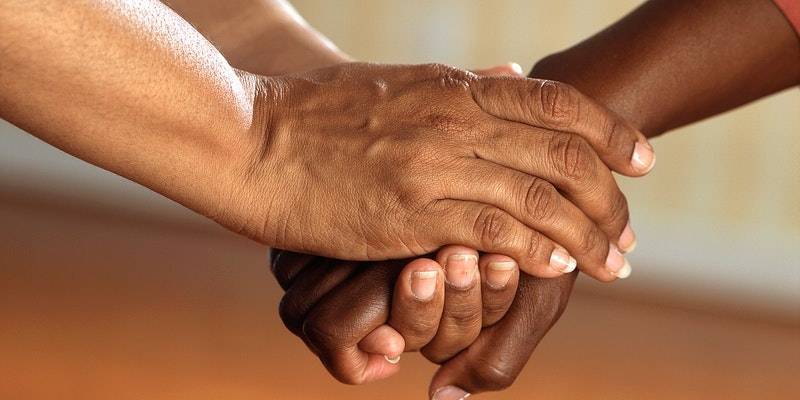

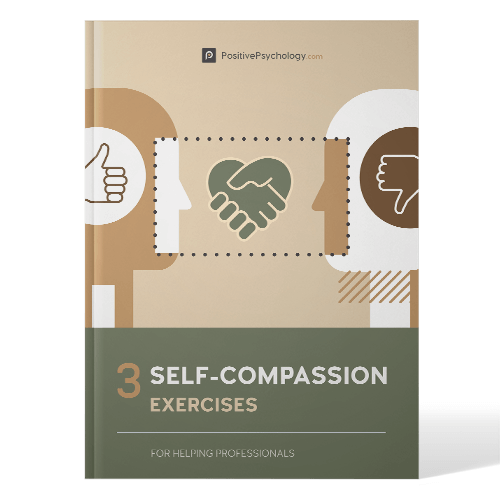
What our readers think
This article helped me a lot! It changed my mind about a few people!
I love this, its sweet, and more people should be this kind because a lot of people are very bad and rude, we need to be more kind to others
Guys just less your depression. its simple <3
This is great
This is great
Dear friends,
Thanks a lot to make me reading this article in full.
1. What’s the based of kindness ?
2. What’s the power to take action of kindness?
Thanks.
Hi Suryadarma,
Thank you for your questions. I’m not sure I understand your second question — could you please phrase this differently? But regarding the first, which I assume is about drivers of kindness 🙂 there are a few theories about why we are motivated to be kind. The Wikipedia page on ‘Helping Behaviors’ actually offers a pretty good summary of these. Among the theories there are perspectives based in evolutionary perspectives, boosting our own egos, and social exchange. It’s an interesting read!
– Nicole | Community Manager
It is a great article for studying.
Hello,
I finally had a chance to read this article in full, and especially liked the the suggested acts of kindness for your readers.
At the beginning of the COVID-19 pandemic, I became part of a team that realised that kindness was going to be part of the recovery process and decided to build a web application. We are building Seekindness.org as a social engagement to encourage and recognise random acts of kindness on regular (daily) basis.
Not being medical people, we don’t understand the “stages of kindness” that an individual goes through to regularly recognise kindness. My thoughts that some RAK’s are very small, and yet provide the same benefits as larger, more publically recognisable ones. If you have the inclination, I would appreciate your views on that question.
Thanks.